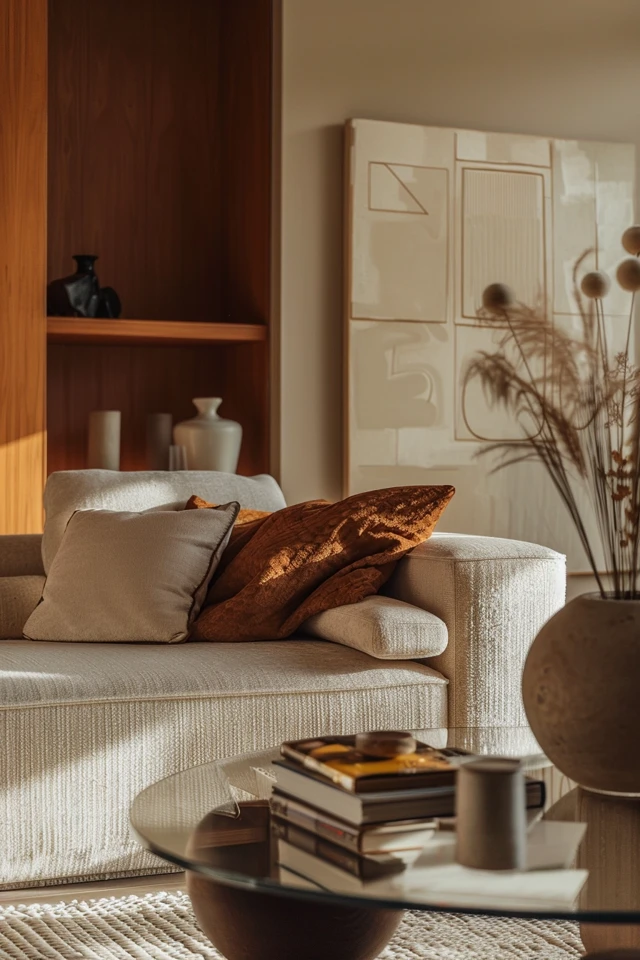Color plays a major role in our lives, affecting our mood and creating a certain atmosphere in our homes. When it comes to matching furniture with wall color, there are a few tips to keep in mind.
First, consider the flooring in the room and choose wall colors that will complement it. The flooring sets the foundation for the overall design, so it’s important to select colors that work well with it. Think about the undertones and shades of your flooring and look for wall colors that will create a harmonious and cohesive look.
Next, decide whether you want a complementary or analogous color scheme between your furniture and walls. A complementary color scheme involves using colors that are opposite to each other on the color wheel. This can create a bold and vibrant look. On the other hand, an analogous color scheme involves using colors that are next to each other on the color wheel. This creates a more harmonious and subtle effect.
Assess the colors in your furniture to determine their undertones. Look for hints of other colors that can guide your wall color choices. For example, if your furniture has warm undertones, consider using wall colors with similar warmth, such as earthy tones or shades of beige. If you have furniture with cool undertones, opt for wall colors in cooler shades like blues or grays.
Finally, don’t be afraid to experiment with different wall colors to create the desired mood in each room. Whether you choose a bold and dramatic color or a soft and soothing hue, make sure to tie it all together with complementary accents. Add pillows, rugs, and other decor pieces that bridge the gap between wall color and furniture, creating a cohesive and visually appealing design.

Key Takeaways:
- Consider the flooring in the room when choosing wall colors.
- Decide on a complementary or analogous color scheme between furniture and walls.
- Assess the undertones in your furniture to guide your wall color choices.
- Experiment with different wall colors to create the desired mood in each room.
- Use complementary accents to tie furniture and wall colors together.
Consider Flooring and Color Wheel Placement
When it comes to matching furniture with wall colors, there are several factors to consider. One important aspect is the flooring in the room. The flooring sets the foundation for the overall design, so it’s crucial to choose colors that work well with it.
For instance, if you have a dark wood floor, you’ll want to avoid dark blue walls that could create a lack of flow. Instead, opt for paint colors with warmer undertones if you have a carpet with brown undertones. By selecting complementary colors, you can create a harmonious atmosphere that ties the furniture and walls together seamlessly.
Another useful tool in achieving color coordination is the color wheel. Familiarize yourself with this valuable resource to guide your color choices. The color wheel offers two primary options: complementary and analogous color schemes.
I prefer a complementary color scheme, where the wall color is opposite to the furniture color on the color wheel. This creates a bold and eye-catching look. However, some people like an analogous color scheme, where the wall color is next to the furniture color. This results in a more cohesive and soothing design.
By utilizing the color wheel, you can narrow down your options and find the best color scheme for your furniture and walls.

Assess Furniture Colors and Choose Wall Colors
Now that you have considered the flooring and determined the color scheme for your space, it’s time to assess the colors in your furniture and choose the perfect wall colors to complement them. By paying attention to the undertones and notes of other colors in your furniture pieces, you can create a harmonious and visually appealing design.
If you are satisfied with the existing color of your furniture, you can enhance the overall look by finding slipcovers or accents that complement the current color scheme. On the other hand, if you are open to making changes, you can select wall colors that enhance the undertones in your furniture and create a cohesive atmosphere.
For example, if you have furniture with blue undertones, you can pair it with wall colors like mustard yellows or different shades of blue to create a relaxing and comfortable ambiance. If your furniture has green undertones, consider matching it with complementary reds or other shades of green to achieve a soothing and nature-inspired look. In the case of furniture with red undertones, coordinating it with deeper browns or off-whites can create a warm and energetic vibe in the room.
Remember, it’s crucial to tie everything together with the right accents. Choose pillows, rugs, and other decor pieces that bridge the gap between the wall color and furniture, allowing you to create a cohesive and visually appealing design. By paying attention to the colors in your furniture and making thoughtful choices for your wall colors, you can achieve a harmonious and aesthetically pleasing home decor.


